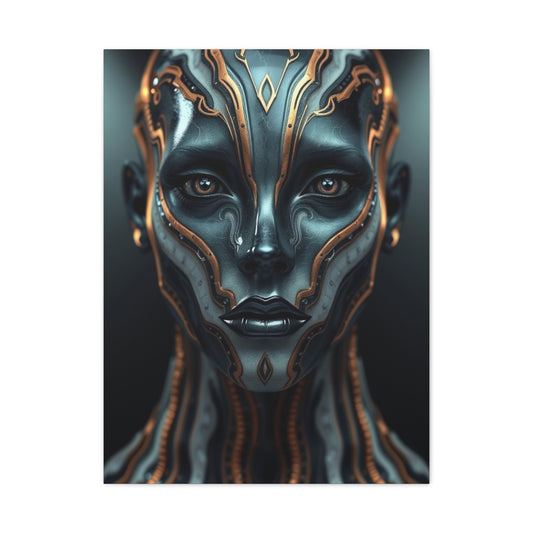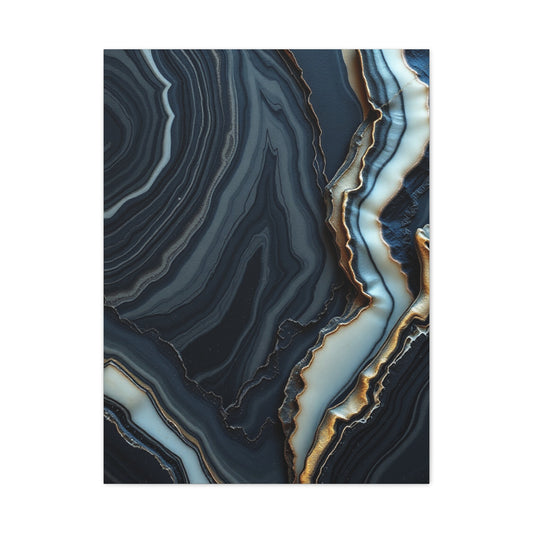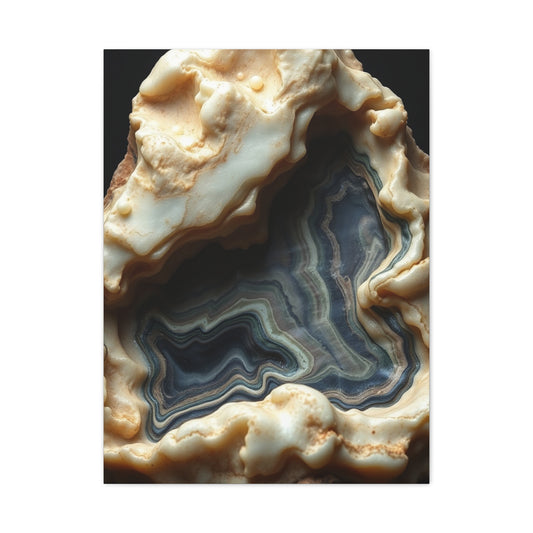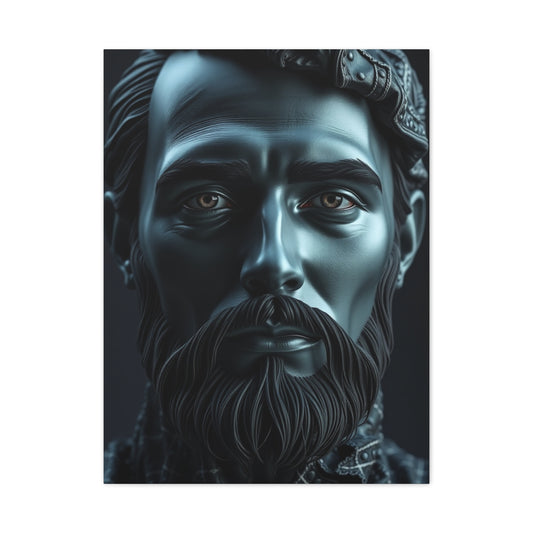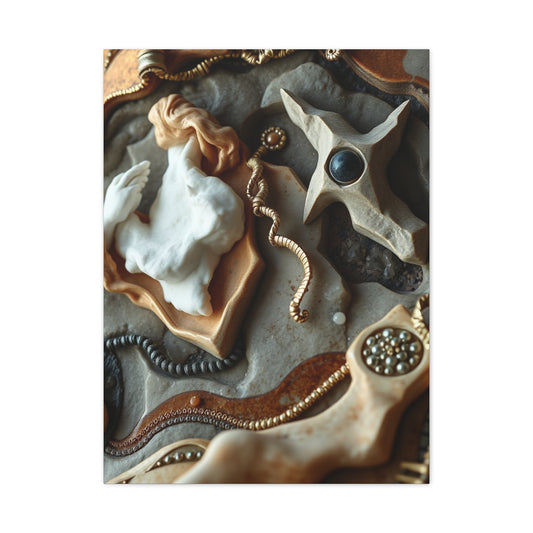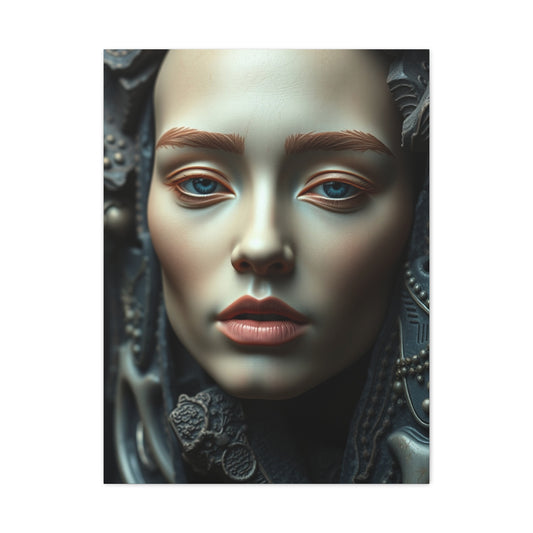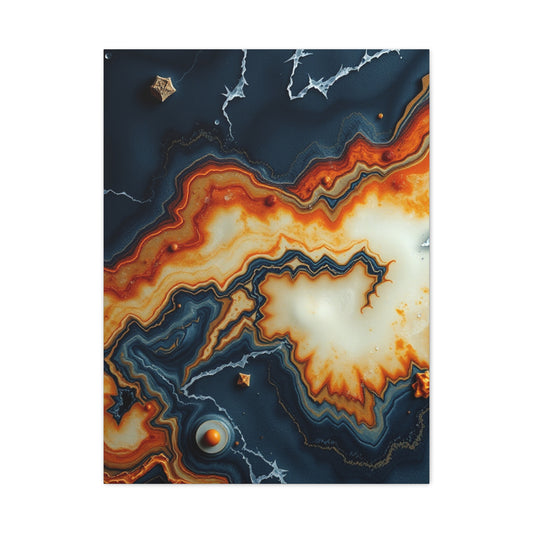Backlighting Charcoal-Ivory Onyx Wall Art for Dramatic Interior Effects
Interior design enthusiasts and professionals alike are constantly exploring ways to elevate spaces beyond the ordinary, seeking materials that fuse beauty, uniqueness, and transformative impact. In the pursuit of creating interiors that are visually striking yet timeless, few materials achieve this balance as effectively as onyx. Revered for its natural elegance, intricate patterns, and luminous qualities, onyx has emerged as a premier choice for designers aiming to craft interiors that captivate and inspire. This extraordinary stone transcends conventional wall treatments, combining elements of artistry, geology, and sophisticated design to create immersive environments that engage the senses.
Onyx is distinguished by its unique geological formations, which result in natural variations of color, veining, and translucency. These organic characteristics ensure that every slab is one-of-a-kind, offering an inherent authenticity that cannot be replicated by synthetic materials. Among its many variants, charcoal-ivory onyx stands out for its dramatic visual contrast. The interplay between deep, smoky charcoal hues and creamy ivory tones generates a dynamic visual dialogue, providing both sophistication and theatrical appeal. Designers leverage this striking contrast to produce feature walls, partitions, and decorative panels that serve as conversation-starting focal points within any interior setting.
A key advantage of onyx in modern interiors is its remarkable ability to interact with light. Unlike opaque stones or traditional wall coverings, onyx possesses a natural translucency that allows light to pass through its surface. This property can be maximized through backlighting, turning a simple wall panel into a luminous art installation. The effect is both dramatic and elegant: walls appear to glow from within, highlighting the natural veining and intricate textures of the stone. By incorporating LED panels, recessed lighting, or integrated light sources, designers can manipulate the intensity, hue, and focus of illumination to create ever-changing moods that enhance the spatial experience.
Beyond its visual appeal, onyx offers versatility in application across diverse architectural and interior styles. In contemporary minimalism, charcoal-ivory onyx introduces a luxurious textural element that contrasts clean lines and neutral color palettes. In more traditional or classical interiors, it complements rich finishes, ornate moldings, and heritage-inspired décor, creating a balanced juxtaposition of modernity and timeless elegance. Its adaptability makes onyx an ideal choice for both residential and commercial projects, from private living spaces to upscale hotels, restaurants, and corporate offices seeking to make a memorable impression.
Onyx also embodies a sense of permanence and value, reinforcing its status as a material associated with luxury and refinement. When used in interior applications, it signals intentional design and attention to detail, qualities highly prized in high-end architecture and décor. The tactile nature of the stone, combined with its visual complexity, adds a multi-sensory dimension to interiors, inviting viewers to not only observe but also experience the space in a more intimate way.
Designers often combine charcoal-ivory onyx with complementary materials such as metal, glass, and wood to enhance its visual impact and integrate it seamlessly into overall design schemes. Polished metallic accents can emphasize the stone’s natural luster, while matte wooden textures provide grounding contrast, creating a harmonious blend of materials that elevates the entire space. Additionally, the ability to craft custom panels or sculptural forms from onyx allows for personalized and bespoke installations, enabling designers to transform conventional walls into dynamic, gallery-worthy surfaces.
The Timeless Appeal of Onyx
Onyx has long captivated designers, architects, and homeowners for its rare combination of natural elegance, geological significance, and artistic adaptability. Unlike synthetic alternatives or more commonly used stones, onyx is a product of millions of years of geological formation, embodying layers of history, pressure, and mineral evolution that cannot be replicated artificially. Each slab is a unique record of nature’s meticulous work, making it far more than a mere material—it becomes a narrative, an artifact of the Earth’s own artistry. This intrinsic individuality makes onyx an investment in authenticity and exclusivity, as no two pieces are ever exactly alike.
What sets onyx apart is not just its beauty but its versatility. Contemporary design increasingly favors materials that serve multiple functions, merging aesthetic appeal with practical utility. Onyx meets this demand with remarkable effectiveness. It can act as a striking wall art element, an ambient lighting feature when backlit, or a commanding architectural focal point, such as a countertop or feature wall. Its translucency allows light to pass through, creating a luminous effect that transforms the ambiance of any room. By blending form and function, onyx satisfies the modern expectation that every design element should justify its presence both visually and functionally.
The visual richness of onyx stems from its natural patterns and color variations, which range from warm amber tones to deep, dramatic greens, blacks, and reds. These organic patterns convey a sense of movement and depth, giving interiors a dynamic, living quality. Unlike manufactured materials, which may offer uniformity but lack character, onyx introduces a natural irregularity that enriches spaces with authenticity and personality. Designers appreciate this unpredictability, as it allows each installation to feel bespoke and tailored, creating environments that are visually captivating and singularly distinctive.
Onyx’s appeal extends beyond aesthetics into the realm of storytelling. Each slab embodies a history shaped over millennia, with layers, veins, and mineral inclusions forming patterns that are both random and intricate. This makes it an ideal material for creating spaces that convey sophistication and narrative depth. Whether used in a residential setting or a commercial project, onyx communicates luxury and refinement while maintaining an organic connection to the natural world. In a marketplace dominated by mass-produced and standardized materials, its authenticity offers a rare sense of distinction and individuality.
Beyond its visual and historical significance, onyx is also celebrated for its versatility in design applications. It can be polished to a high gloss for a sleek, contemporary look, or honed to a matte finish for understated elegance. Backlighting techniques can further accentuate its depth and translucency, turning even a small panel into a dramatic centerpiece. From feature walls and countertops to decorative panels and lighting installations, onyx adapts effortlessly to a range of styles, from classic luxury interiors to modern minimalist aesthetics.
Ultimately, the timeless appeal of onyx lies in its harmonious balance of beauty, functionality, and uniqueness. It is a material that elevates spaces not only visually but conceptually, transforming interiors into statements of taste, individuality, and luxury. By embracing onyx, designers and homeowners alike invest in a material that offers both natural artistry and enduring sophistication, ensuring that their spaces remain remarkable, inspiring, and undeniably distinctive for generations to come.
Geological Formation and Unique Characteristics
Onyx is much more than a decorative material; it is a geological marvel shaped over countless millennia. Its creation is a meticulous, patient process that begins in limestone caves, where calcium carbonate-rich waters slowly deposit layers upon layers of mineral matter. Over thousands of years, these deposits solidify into stone, forming intricate patterns that are at once natural and awe-inspiring. Each layer contributes to the stone’s characteristic translucency and depth, resulting in surfaces that appear to shift and move as light interacts with them. Unlike artificial wall finishes, which often rely on printed textures or painted effects, onyx carries the mark of time itself—an organic narrative frozen in stone.
One of the most captivating aspects of charcoal-ivory onyx is its dramatic interplay of tones. The deep, smoky charcoal veining contrasts strikingly with the soft, creamy ivory backgrounds, producing a visual tension that draws the eye and commands attention. This bold duality makes the stone an ideal centerpiece for interior designs seeking both elegance and drama. It transforms ordinary walls into immersive visual experiences, where every glance uncovers new details in the intricate swirls, bands, and cloud-like formations.
Designers often enhance the natural beauty of onyx through bookmatching, a technique in which two consecutive slabs are positioned side by side in mirrored alignment. This method amplifies the inherent symmetry of the stone, creating patterns that appear almost deliberate in their perfection, yet remain authentically natural. The resulting installation transcends ordinary decoration, giving walls a gallery-quality presence that captivates viewers and anchors the overall design scheme. In many high-end interiors, bookmatched charcoal-ivory onyx serves as a focal point, transforming living rooms, hotel lobbies, or reception areas into spaces of striking visual poetry.
The mineral composition of onyx further enhances its uniqueness. Each slab reflects the specific environmental conditions of the cave where it formed—factors such as water mineral content, temperature fluctuations, and natural pressure all influence the stone’s final appearance. Some slabs feature pronounced, high-contrast veins that create a bold, dramatic aesthetic, while others exhibit more subtle gradations, producing a gentle, harmonious flow of color. This natural variability ensures that no two onyx walls are ever identical, offering designers a material that is inherently exclusive and versatile enough to complement a wide spectrum of interior styles. From minimalist, contemporary environments to opulent, ornate spaces, charcoal-ivory onyx adapts effortlessly, enhancing the character of the surrounding design elements.
The three-dimensional quality of onyx is another defining feature. Unlike flat, printed surfaces, the stone’s layers extend beneath the surface, producing depth that evolves as the viewer moves around the room. Light interacts differently with each layer and mineral inclusion, creating dynamic effects that shift throughout the day. This living quality allows charcoal-ivory onyx walls to remain engaging over time, offering new visual discoveries with every glance. Subtle details that were unnoticed at first may emerge under different lighting conditions, rewarding observers with a continual sense of wonder.
Integrating Onyx Wall Art into Interiors
Onyx is ideally suited for creating luxury interior statements. Large-scale installations can dominate a feature wall, transforming a living room, lobby, or commercial space into a visually immersive experience. In residential applications, charcoal-ivory onyx can be used behind a headboard, within a kitchen backsplash, or as a partition wall to define spaces without compromising light flow. In commercial interiors, onyx adds prestige and elegance, enhancing hotel lobbies, corporate offices, and upscale retail environments.
The three-dimensional depth inherent in onyx contributes to a dynamic visual experience. The veins and swirls appear to shift depending on the viewing angle, creating a constantly evolving focal point. Combined with backlighting, these effects become more pronounced, turning static surfaces into vibrant, interactive installations.
Bookmatching remains one of the most effective methods for maximizing the visual impact of onyx walls. By carefully arranging consecutive slabs, designers create mirrored patterns that appear almost symmetrical, lending a sense of harmony and balance. This technique amplifies the stone’s natural beauty and enhances the viewer’s perception of luxury and craftsmanship.
Backlighting: Transforming Onyx into Luminous Art
The semi-translucent nature of onyx represents its most transformative quality. Unlike other stones, light can penetrate the surface, revealing internal layers, mineral inclusions, and subtle tonal shifts. When backlit, onyx becomes more than a wall covering—it becomes an ambient light source and a dynamic art installation.
LED technology has revolutionized onyx backlighting. Energy-efficient, low-heat LED panels preserve the stone while offering consistent, programmable lighting options. Designers can manipulate color temperature, brightness, and lighting patterns to match the mood of the space or adapt to natural light changes throughout the day. Warm LED lighting, for instance, emphasizes the ivory tones, while cooler lighting can highlight charcoal veining, creating dramatic contrast and depth.
Practical Considerations for Onyx Wall Installations
While the aesthetic potential of onyx is immense, successful installation requires careful planning and technical expertise. Considerations include:Stone Thickness and Support: Onyx slabs are delicate compared to granite or marble. Proper mounting and support structures are essential, especially for large installations or backlit designs.Lighting Design: Achieving optimal backlighting requires understanding the stone’s translucency, color, and thickness. Placement of LEDs, light diffusion panels, and control systems must be planned to prevent hotspots or uneven illumination.
Maintenance: Onyx is softer than other stones and may require periodic sealing and gentle cleaning to maintain its appearance. Avoid abrasive cleaners that can damage the surface.Budget Considerations: Onyx is a premium material. Costs include not only the stone but also installation, backlighting systems, and potential structural reinforcements. However, the long-term visual impact and prestige often justify the investment.Collaborating with professional fabricators and lighting specialists ensures that each installation achieves maximum visual and functional potential while preserving the stone’s integrity.
Design and Inspirations
Charcoal-ivory onyx, especially when paired with backlighting, offers an exceptional combination of elegance, versatility, and visual drama, making it one of the most sought-after materials in contemporary interior design. Its striking interplay of deep charcoal tones with soft ivory veins creates a natural contrast that is both bold and refined. When illuminated from behind, this stone transforms interiors by emphasizing its organic patterns, enhancing depth, and creating a luminous, almost ethereal glow. Its adaptability allows it to be applied in a wide array of spaces, blending functionality with artistic expression.
Feature Walls: One of the most compelling uses of charcoal-ivory onyx is as a feature wall. Whether in a residential living room or a high-end hotel lobby, a backlit onyx wall becomes an immediate focal point, commanding attention while adding layers of texture and sophistication. The interplay of light and natural veining draws the eye across the surface, creating a dynamic, ever-changing visual experience throughout the day. Designers often pair this application with minimalistic furnishings and neutral palettes to let the stone’s natural beauty take center stage, elevating the room from ordinary to extraordinary.
Headboards: In bedroom design, charcoal-ivory onyx serves as both a luxurious headboard and an ambient lighting source. Its translucency allows for soft, diffused illumination, creating a cozy yet opulent atmosphere ideal for relaxation. By integrating this material into the sleeping area, the headboard becomes more than a functional piece of furniture—it transforms into a design statement that reflects both style and innovation. Layered lighting around the onyx can further accentuate its patterns, adding depth and enhancing the overall sensory experience of the room.
Effects for Modern Spaces
The color palette available in onyx encompasses virtually every hue found in nature, from pristine whites and sophisticated grays to vibrant greens, warm oranges, delicate pinks, and rich golden tones. This extraordinary diversity provides designers with unprecedented flexibility in creating wall installations that complement any color scheme or design aesthetic. The natural variation within individual slabs adds complexity and depth that enhances rather than competes with surrounding design elements.
Neutral onyx varieties, including creamy whites and subtle grays, serve as sophisticated backdrops that enhance rather than dominate interior spaces. These understated options provide luxury and refinement without overwhelming existing design elements, making them ideal for environments where subtlety and elegance take precedence. The natural patterns within neutral onyx create visual interest without introducing jarring color contrasts that might disrupt carefully planned color palettes.
Bold onyx varieties, featuring intense greens, deep blues, or dramatic reds, function as statement pieces that anchor entire design schemes. These dramatic options work particularly well in contemporary environments where strong focal points create visual hierarchy and spatial definition. The intensity of these colors, combined with onyx's natural patterning, creates installations that command attention while maintaining sophisticated appeal.
The versatility of onyx extends beyond color selection to include various finishing options that further customize its appearance and performance characteristics. Polished finishes create reflective surfaces that amplify light and color intensity, while honed finishes produce more subdued, matte appearances that integrate seamlessly with contemporary minimalist aesthetics. These finishing options allow fine-tuning of the stone's visual impact to match specific design requirements.
Fabrication techniques enable onyx to be shaped into various formats, from large-format panels that create seamless wall coverings to smaller tiles that can be arranged in complex patterns. Custom cutting allows for the creation of unique shapes and configurations that respond to architectural constraints while maximizing the stone's visual impact. This fabrication flexibility ensures that onyx can be successfully integrated into virtually any spatial configuration or design concept.
Wall Art Influences Perception
The presence of onyx in interior spaces immediately communicates sophistication, taste, and attention to quality that distinguishes environments from ordinary installations. This material carries associations with luxury and exclusivity that have developed over centuries of use in prestigious applications, from ancient palaces to contemporary high-end residences. The rarity of onyx, combined with the skill required for its proper installation, positions it as a symbol of discerning taste and investment in quality.
Property values often reflect the presence of premium materials like onyx, as these installations communicate quality and attention to detail that appeals to sophisticated buyers. The durability and timeless appeal of onyx ensure that investments in these installations continue providing value over extended periods, making them financially sound choices for property owners concerned with long-term appreciation. The uniqueness of each installation creates distinctive character that sets properties apart in competitive markets.
Commercial applications of onyx wall art create memorable experiences that enhance brand perception and customer satisfaction. Hotels, restaurants, spas, and corporate offices utilize onyx installations to create impressive first impressions that communicate professionalism and attention to quality. These installations become conversation pieces that generate positive word-of-mouth marketing while creating environments that encourage return visits and customer loyalty.
The craftsmanship required for successful onyx installations adds another layer of prestige to these projects, as only skilled artisans possess the expertise necessary to properly handle and install this delicate material. The collaboration between designers, fabricators, and installers required for onyx projects creates bespoke solutions that reflect the highest levels of professional competence and attention to detail.
The psychological impact of luxury materials extends beyond simple status representation, creating environments that promote confidence, relaxation, and well-being. Spaces featuring onyx installations often inspire feelings of calm and contemplation that enhance the human experience within built environments. This emotional response contributes to the overall success of interior designs and the satisfaction of occupants.
Modern Wall Art with Minimalist Architecture
The historical precedent for onyx use spans multiple civilizations and architectural styles, providing contemporary designers with extensive inspiration for modern applications. Ancient Egyptian, Greek, and Roman civilizations utilized onyx in ceremonial and architectural contexts, establishing traditions that continue influencing contemporary design approaches. This historical continuity allows onyx to function authentically within traditional design schemes while maintaining relevance in contemporary applications.
Traditional interior styles benefit from onyx's classical associations and natural elegance, which complement established materials like marble, brass, and rich woods. The stone's organic patterns and warm tones create harmonious relationships with traditional elements while introducing subtle contemporary sensibilities. This balance between historical authenticity and modern sophistication appeals to clients who appreciate classical beauty enhanced by contemporary execution.
Contemporary and minimalist design styles embrace onyx's clean lines and translucent qualities, which align with principles emphasizing natural materials and honest expression of material characteristics. The stone's ability to function as both structural element and artistic feature supports minimalist objectives of achieving maximum impact through minimal means. Large-format onyx installations create powerful focal points without cluttering spaces with unnecessary decorative elements.
Industrial design aesthetics benefit from onyx's contrast with harder materials like steel and concrete, creating compositional tension that enhances both material types. The warmth and organic quality of onyx soften industrial environments while maintaining the authenticity that defines this design approach. The combination of natural stone with industrial materials creates sophisticated contrasts that appeal to contemporary sensibilities.
Transitional design styles utilize onyx's versatility to bridge gaps between traditional and contemporary elements, creating cohesive environments that incorporate the best aspects of both approaches. The stone's ability to complement various materials and styles makes it ideal for spaces that must accommodate diverse aesthetic preferences or evolving design requirements.
Sustainable Wall Art
Beyond purely decorative applications, onyx wall installations serve multiple functional purposes that enhance their value and integration within architectural systems. Room dividers utilizing onyx create spatial separation while maintaining visual continuity through the stone's translucent properties. These installations provide privacy without completely closing off spaces, supporting open-plan living concepts while creating defined zones for different activities.
Fireplace surrounds crafted from onyx create dramatic focal points that enhance both the aesthetic and functional aspects of these architectural features. The stone's heat resistance and natural beauty make it ideal for these applications, while backlighting capabilities can create stunning effects that complement firelight. The combination of natural stone and fire creates primal connections that enhance the psychological comfort provided by these installations.
Bathroom applications showcase onyx's versatility in environments where moisture resistance and easy maintenance are crucial considerations. Properly sealed onyx installations create spa-like environments that promote relaxation and well-being while providing practical surfaces that can withstand daily use. The stone's natural patterns and warm tones complement the cleansing and rejuvenating functions of bathroom spaces.
Kitchen installations utilize onyx's heat and stain resistance properties while creating visual continuity between wall and counter surfaces. The ability to create seamless installations using matching onyx for both horizontal and vertical surfaces creates unified designs that appear custom-crafted for specific spaces. This integration enhances both the functionality and aesthetics of kitchen environments.
Staircase applications transform utilitarian architectural elements into artistic features that enhance the experience of moving through spaces. Illuminated onyx risers or handrail installations create dramatic effects that guide movement while providing ambient lighting for safety and aesthetics. These applications demonstrate onyx's ability to enhance functional elements without compromising their practical requirements.
Humidity Considerations in Wall Art Placement
Successful onyx wall installations require comprehensive understanding of the material's physical properties and structural requirements to ensure long-term performance and safety. The stone's relative softness compared to granite or quartzite necessitates specialized handling procedures during fabrication, transportation, and installation phases. Professional installers must possess expertise in working with delicate natural stones to avoid damage during these critical phases.
Structural support systems must accommodate onyx's weight while providing adequate backing to prevent flexing that could cause cracking or failure. The substrate preparation process requires careful attention to flatness, stability, and moisture control to create optimal conditions for successful installation. Inadequate preparation can lead to installation failures that compromise both aesthetics and structural integrity.
Sealing procedures are crucial for protecting onyx from staining and moisture damage, particularly in environments where exposure to liquids or high humidity conditions are expected. Professional-grade sealers specifically formulated for natural stone provide optimal protection while preserving the stone's natural appearance and translucent properties. Regular resealing schedules ensure continued protection and optimal performance throughout the installation's lifespan.
Backlighting system integration requires careful coordination between stone fabrication and electrical installation to achieve optimal results while maintaining safety standards. LED panels must be properly rated for the installation environment and equipped with appropriate heat dissipation systems to prevent damage to both lighting components and stone materials. Professional electrical installation ensures compliance with building codes and safety regulations.
Maintenance requirements for onyx installations include regular cleaning with pH-neutral products specifically formulated for natural stone surfaces. Abrasive cleaners or acidic substances can damage the stone surface and compromise its appearance and protective sealing. Proper maintenance procedures preserve the installation's beauty and extend its functional lifespan significantly.
Energy-Efficient LED Lighting for Illuminated Wall Art
The environmental impact of onyx installation projects encompasses quarrying, transportation, fabrication, and installation phases, each presenting opportunities for implementing sustainable practices. Responsible quarrying operations minimize environmental disruption while implementing restoration procedures that return quarry sites to beneficial uses after extraction completion. These practices ensure that natural stone harvesting contributes to rather than detracts from environmental stewardship objectives.
Transportation efficiency considerations include optimizing shipping logistics to minimize fuel consumption and emissions associated with moving stone materials from quarries to fabrication facilities and installation sites. Local sourcing when available reduces transportation impacts while supporting regional economies and reducing project timelines. These considerations contribute to overall project sustainability while potentially reducing costs.
Fabrication waste minimization strategies include careful planning to maximize yield from each stone slab while finding beneficial uses for offcuts and waste materials. Smaller pieces can be utilized for accent features, mosaics, or other applications that extend the useful life of quarried materials. These approaches reduce waste disposal requirements while maximizing the value obtained from each extracted stone block.
The longevity of properly installed and maintained onyx installations contributes to sustainability by reducing the need for replacement materials over extended periods. Quality installations can provide decades of service when properly cared for, comparing favorably to manufactured alternatives that may require more frequent replacement. This durability factor enhances the environmental value proposition of natural stone installations.
End-of-life considerations for onyx installations include potential for reuse in other applications or recycling into aggregate materials for construction projects. The natural composition of onyx makes it completely recyclable without generating harmful byproducts, contrasting favorably with synthetic materials that may present disposal challenges.
Economic Advantages of Multi-Purpose Wall Art
The initial investment required for onyx wall installations typically exceeds costs for conventional wall treatments, but this premium reflects the material's rarity, quality, and the specialized expertise required for successful installation. Understanding the cost structure helps clients make informed decisions about project scope and specifications while managing budget expectations appropriately. Professional guidance during the planning phase ensures optimal allocation of resources for maximum visual and functional impact.
Cost variables include stone selection, fabrication complexity, installation requirements, and finishing specifications, each contributing to overall project expenses. Premium stone varieties with exceptional patterns or colors command higher prices, while simpler installations with standard fabrication requirements offer more accessible entry points. Professional designers can help balance aesthetic objectives with budget constraints to achieve optimal outcomes.
Return on investment considerations include both immediate aesthetic impact and long-term property value enhancement. Quality onyx installations often contribute to property values that exceed their installation costs, particularly in luxury markets where discerning buyers appreciate premium materials and craftsmanship. These value additions make onyx installations financially attractive for property owners considering resale potential.
Maintenance costs over the installation's lifespan remain relatively modest when proper care procedures are followed, contributing to favorable long-term cost of ownership. Regular sealing and appropriate cleaning products preserve the installation's appearance and protect against damage that might require costly repairs or replacement. This predictable maintenance requirement allows for accurate long-term budget planning.
The durability and timeless appeal of onyx installations provide protection against design trends that might make other materials appear dated over time. Quality natural stone maintains its appeal across changing style preferences, ensuring that investments continue providing value regardless of evolving design fashions.
Global Sourcing and Quality Variations in Onyx Materials
Onyx deposits occur in various geological formations worldwide, each producing stones with distinctive characteristics that reflect local mineral compositions and formation conditions. Major onyx-producing regions include Iran, Turkey, Mexico, Pakistan, and Argentina, each known for specific color ranges and pattern types that appeal to different market segments. Understanding these regional variations helps designers select materials that best meet specific project requirements.
Iranian onyx, particularly from the Isfahan region, is renowned for its exceptional translucency and vibrant green coloration that creates stunning backlit installations. The geological conditions in this region produce stones with consistent color saturation and minimal structural flaws that ensure reliable performance in demanding applications. These premium materials command higher prices but deliver exceptional results in high-visibility installations.
Turkish onyx varieties offer excellent value propositions with reliable quality and diverse color options that suit various design applications. The country's long history of stone extraction and processing has developed sophisticated supply chains that deliver consistent products to international markets. Turkish onyx provides accessible entry points for projects requiring quality materials at competitive price points.
Mexican onyx, particularly honey-colored varieties, displays warm tones and dramatic veining patterns that create welcoming, sophisticated atmospheres. The country's proximity to North American markets provides logistical advantages that can reduce transportation costs and delivery times for regional projects. These materials excel in residential applications where warm, inviting aesthetics are prioritized.
Quality assessment criteria include translucency levels, color consistency, structural integrity, and freedom from defects that might compromise performance or appearance. Professional stone suppliers provide detailed specifications and sample materials that allow informed selection decisions based on specific project requirements. Working with experienced suppliers ensures access to highest-quality materials and expert guidance throughout the selection process.
Integrating Interactive Wall Art in Modern Interiors
Contemporary designers continuously develop innovative applications for onyx that push the boundaries of traditional stone use while respecting the material's inherent characteristics. Curved installations utilize onyx's workability to create flowing, organic forms that enhance the stone's natural patterns while creating unique architectural features. These applications require specialized fabrication techniques but produce results that distinguish projects from conventional installations.
Three-dimensional wall features incorporate varying thicknesses and projections that create sculptural effects using onyx's natural beauty as the primary design element. These installations transform flat wall surfaces into dynamic, engaging features that interact with light and shadow throughout the day. The three-dimensional quality amplifies onyx's visual impact while creating opportunities for integrated lighting effects.
Mosaic applications combine multiple onyx varieties or pieces to create complex patterns that maintain the material's natural character while introducing controlled geometric or organic compositions. These techniques allow utilization of smaller pieces that might otherwise be considered waste while creating custom installations that respond to specific architectural requirements.
Mixed-material compositions integrate onyx with metals, glass, or other stones to create contemporary installations that highlight each material's unique properties through contrast and complement. These approaches expand design possibilities while maintaining onyx as a primary feature that anchors the overall composition. Successful mixed-material installations require careful consideration of thermal expansion, structural requirements, and aesthetic relationships.
Digital design tools increasingly enable precise visualization of onyx installations before fabrication begins, allowing clients and designers to evaluate options and make informed decisions about pattern matching, lighting effects, and overall composition. These tools reduce uncertainty and ensure that finished installations meet or exceed expectations while minimizing waste and revision requirements.
Preservation of Mixed-Media Wall Art
Proper maintenance procedures ensure that onyx wall installations retain their beauty and performance characteristics throughout their operational lifespan while protecting the investment in quality materials and professional installation. Understanding the specific requirements of onyx care enables property owners to implement appropriate maintenance protocols that preserve the stone's appearance and structural integrity.
Daily cleaning procedures utilize pH-neutral cleaners specifically formulated for natural stone surfaces to remove surface contaminants without damaging the stone or its protective sealing. Microfiber cloths provide effective cleaning action without creating scratches that might compromise the stone's polished finish. These gentle cleaning approaches maintain the installation's appearance while preventing accumulation of soils that might cause staining.
Periodic deep cleaning procedures address accumulated contaminants that resist daily cleaning efforts while refreshing the stone's appearance and preparing surfaces for resealing applications. Professional cleaning services possess specialized equipment and expertise to perform these procedures safely and effectively, ensuring optimal results without risk of damage. These services often prove more cost-effective than attempting complex cleaning procedures without proper equipment or training.
Resealing schedules depend on environmental conditions, usage levels, and traffic patterns, but typically range from annual to biennial intervals for most applications. High-traffic areas or installations exposed to moisture may require more frequent sealing to maintain optimal protection. Professional assessment of sealing condition helps determine appropriate timing for resealing applications.
Damage repair procedures for minor scratches, chips, or etching can often restore installations to their original condition when performed by experienced stone restoration professionals. Early intervention prevents minor damage from progressing to more serious conditions that might require extensive repair or replacement. Professional restoration services ensure that repairs blend seamlessly with surrounding stone while maintaining structural integrity.
Preventive measures include protecting installations from potential damage sources such as acidic substances, abrasive materials, or impact damage that could compromise the stone's appearance or structure. Education of building occupants regarding proper care helps prevent damage while ensuring that maintenance procedures are followed consistently.
Conclusion:
The remarkable journey through onyx's extraordinary characteristics reveals a material that transcends conventional expectations for wall art applications. This exceptional natural stone combines geological rarity, artistic beauty, functional versatility, and transformative potential into a singular solution that addresses multiple design objectives simultaneously. The translucent properties that enable breathtaking backlighting effects, combined with patterns that represent millions of years of natural artistry, position onyx as an unparalleled choice for sophisticated interior applications.
The investment in onyx wall installations extends far beyond immediate aesthetic impact, encompassing long-term value creation, environmental responsibility, and the psychological benefits of living and working within spaces enhanced by authentic natural beauty. The material's ability to serve multiple functions while maintaining its artistic integrity makes it particularly valuable in contemporary design contexts where every element must justify its presence through both beauty and purpose.
The technical expertise required for successful onyx installation ensures that each project represents a collaboration between skilled professionals dedicated to achieving exceptional results. This collaborative approach, combined with the material's inherent uniqueness, creates installations that reflect the highest levels of craftsmanship while celebrating nature's artistic capabilities. The resulting environments inspire contemplation, promote well-being, and create lasting impressions that enhance human experiences within built spaces.
The environmental considerations associated with onyx selection and installation demonstrate how luxury and sustainability can coexist when proper practices are implemented throughout the project lifecycle. Responsible sourcing, efficient fabrication, professional installation, and appropriate maintenance create sustainable luxury that respects both environmental stewardship and aesthetic excellence. This approach ensures that investments in onyx installations contribute positively to both built and natural environments.
The economic proposition presented by onyx installations encompasses immediate transformation potential and long-term value preservation that distinguishes quality investments from merely expensive purchases. The material's durability, timeless appeal, and positive impact on property values create financial benefits that often exceed initial investment costs while providing decades of aesthetic satisfaction. This value proposition makes onyx installations attractive to both residential and commercial clients seeking optimal returns on design investments.
The global availability of onyx varieties ensures that appropriate materials can be sourced for virtually any design application, while regional preferences and characteristics provide opportunities for creating installations that respond to local aesthetic traditions and climate conditions. This global yet local approach enables authentic design solutions that respect cultural contexts while embracing universal appreciation for natural beauty.
Contemporary design trends increasingly emphasize authenticity, sustainability, and emotional resonance within built environments, all characteristics that onyx installations provide naturally. The material's ability to create connections with nature while serving functional requirements positions it ideally for future design directions that prioritize human well-being alongside aesthetic achievement. This alignment with emerging trends ensures continued relevance and appreciation for onyx installations.
The maintenance requirements associated with onyx installations, while requiring attention and appropriate products, remain manageable when proper procedures are implemented consistently. The preservation of these installations through appropriate care ensures that investments continue providing returns throughout their extended operational lifespans. This longevity factor, combined with the material's inherent beauty, creates compelling arguments for selecting onyx despite its premium initial costs.

